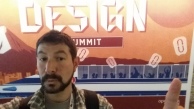We’re building real business on OpenStack. This seems especially true in Asia where the focus is on using the core not expanding it. At the same time, we’ve entered the “big tent” era where non-core projects are proliferating.
Let’s explore what’s signal and what’s noise … but before we start, here are quick links to my summit videos:

- Fixing the Fidelity Gap (SuperUser TV)
- Big Tent and OpenStack Ecosystem (NewStack Interview, scroll to bottom)
- Iterative Deployments for Kubernetes, OpenStack and Contrail with Juniper’s Parantap (Conference Presentation)
- Is DefCore Picking Winners? YES! Listen for the Q&A (with Egle)
- Bonus: Egle’s Keynote DefCore Update
OpenStack summits are really family reunions. While aunt and uncles (Vendors) are busying showing off, all the cousins (Projects) are getting re-acquainted. Like any family it’s fun, competitive, friendly and sometimes dysfunctional.
Signal: Global Users and Providers
There are real deployments of OpenStack and real companies building businesses around the code base. I’ve been pleasantly surprised by the number of people quietly making OpenStack work. Why quietly? It’s still more of a struggle than it should be.
Signal: Demand for Heterogeneous and Interop Environments
There’s no such thing as a mono-lithic cloud. Even within the community, Monty’s Shade API normalizer, is drawing attention. More broadly, everyone is using multiple cloud platforms and the trend accelerates due to container portability.
Signal: Container Workloads
Containers are dominating the cloud discussion for good reasons. They are pushing into OpenStack at the top (Platform), bottom (Deployment) and side (Scheduler). While OpenStack must respond architecturally, it’s not clear yet if it can pivot from virtualization focused to something broader fast enough (Mesos?).
Signal: Ansible
The lightweight DevOps tool seems to be winning the popularity contest. It may not be the answer to all problems, but it’s clearly part of helping solve a lot of them. Warning: Ansible complexity explodes on multi-tiered, scale and upgrade orchestration.
Signal: DefCore and Product Working Group (PWG)
Both efforts have crossed from a concept into decision-making bodies within the community. The work is far from over. DefCore needs users to demand compliance from vendors. Product WG needs developers to demand their management sign on to PWG roadmaps.
Noise: Distro vs Service Argument
There are a lot of ways to consume OpenStack. None of them are wrong but some are more aligned with individual vendor strategies than others. Saying one way to run OpenStack is more right is undermining our overall operability and usability objectives.
Noise: Contributor Metrics
We’ve created a very commit economy and summits are vendors favorite time to brag about their dedication to community via upstreaming. These metrics are incomplete at best and potentially destructive to the health of the project as vendors compete to win the commit race instead of the quality and ecosystem race.
Noise: Big Tent
We’ve officially entered the “big tent” era of OpenStack. This governance change was lead by the Technical Committee to address how we manage projects; however, there are broader user, operator, vendor and ecosystem implications. Unfortunately, even within the community, the platform implications of a loosely governed, highly inclusive community not completely understood.
Overall, I left Tokyo enthusiastic about OpenStack’s future as a platform and community; however, I also see that we have not structured how we mingle platform, community and ecosystem. This is especially true because OpenStack is just a part in the much broader cloud market and work outside OpenStack is continue to disrupt our plans. As a Board member, I’ll hoping to start a discussion about this and want to hear your opinions.
Regarding identifying the “Distro vs Service Argument” as noise, I completely agree, Rob. Both have their merits and are better suited than the other for the given organization’s needs.
Based on your overall perception, you remain enthusiastic and I’ll nurture that perspective encouraging you not to lose faith yet in OpenStack as a platform that can swivel to incorporate, play beside, under or over containers. It is appropriate to highlight containerized workloads and their orchestrators (especially given their networking) as an area that needs continued focus.
LikeLike
Thanks Lee. Containers will be everywhere. OpenStack is just part of the story. But trying to play everywhere is to lose everywhere.
LikeLike
Rob: Thanks for the great insight into the conference. I certainly miss the Openstack family. I still struggle with adoption curve, as you know my belief is community needs to focus more on hardening the technology we have so it is easy to take it into production. Versus competitive offerings it still takes way too much heavy lifting! Live long and Prosper!
LikeLike
Amen! You were a critical support of the earliest DefCore work along those same lines. Thanks for the comment.
LikeLike
Pingback: My OpenStack 2016 Analysis: Continue Core, Stop Confusing Ecosystem, Change Hybrid Approach | Rob Hirschfeld
Pingback: (re)OpenStack for 2017 – board voting week starts this Monday | Rob Hirschfeld